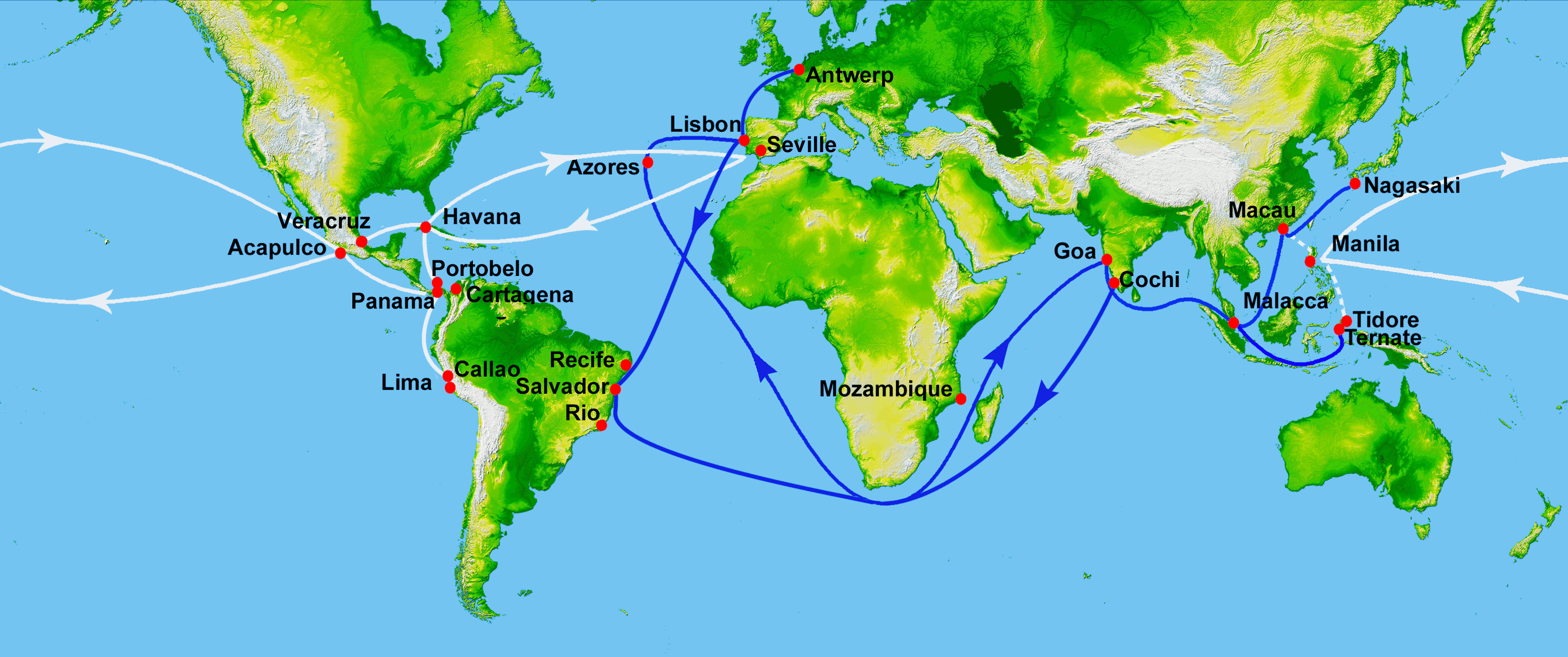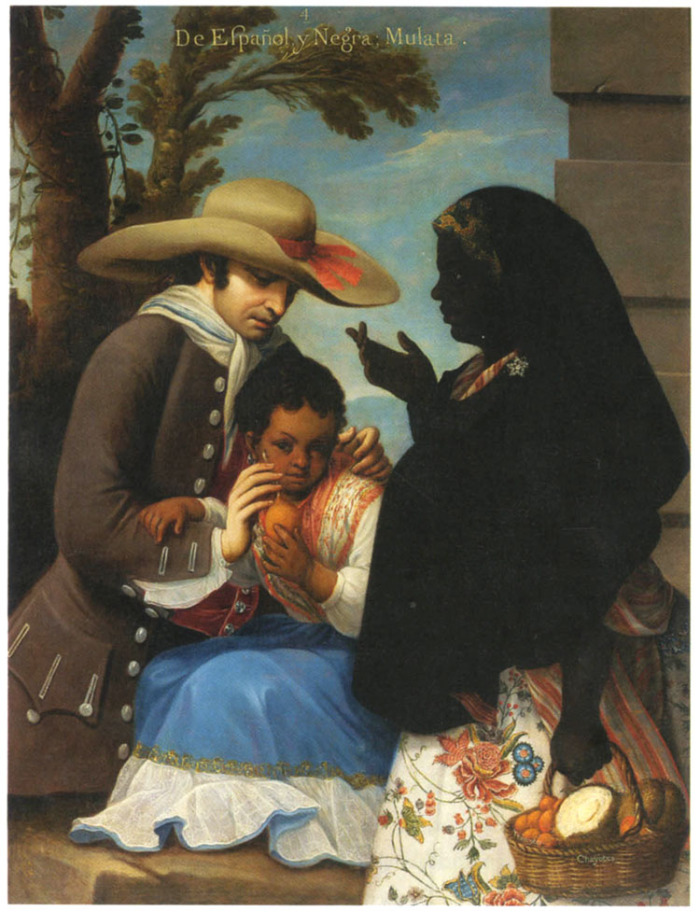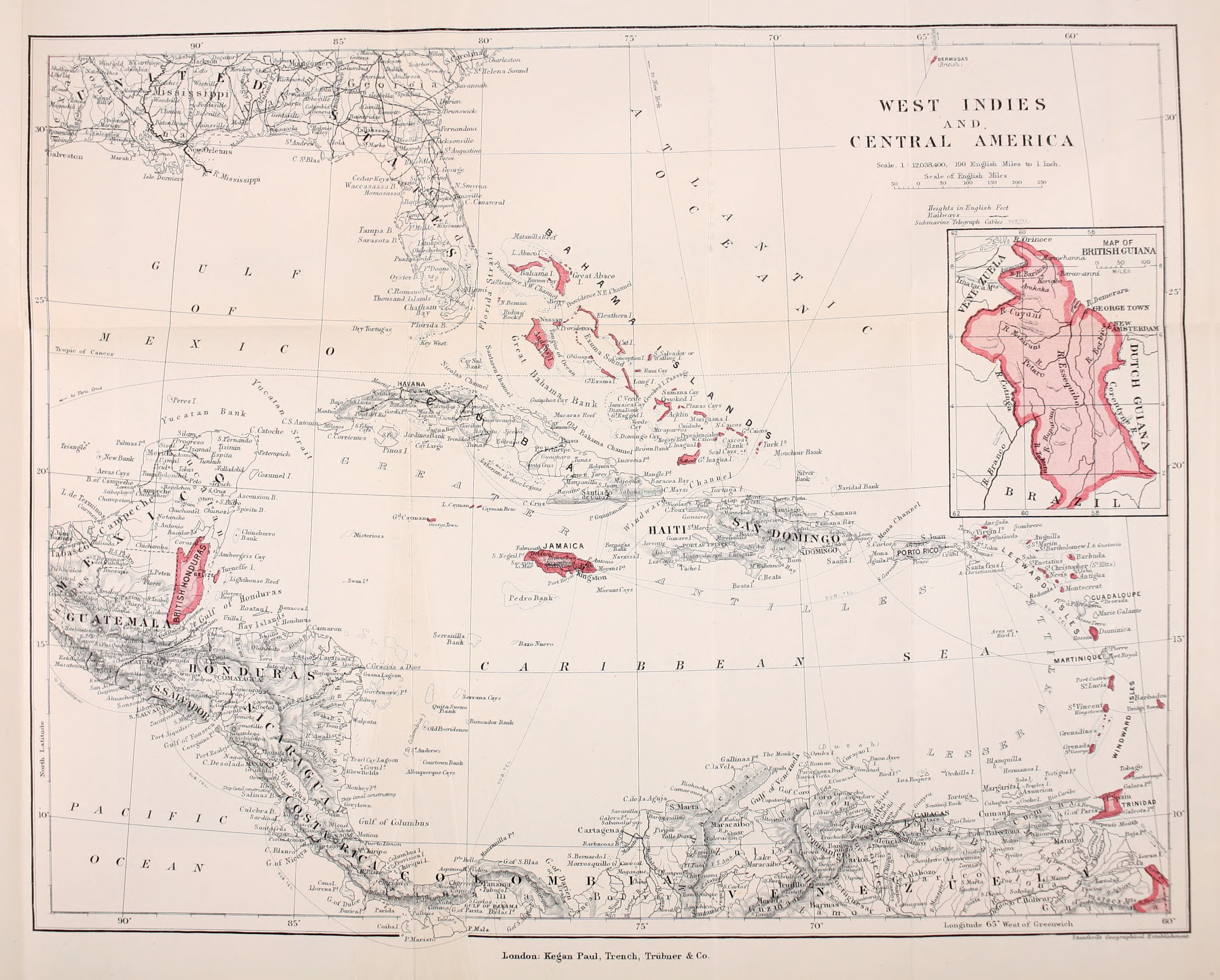|
Slavery In Cuba
Slavery in Cuba was a portion of the larger Atlantic slave trade that primarily supported Spanish plantation owners engaged in the sugarcane trade. It was practiced on the island of Cuba from the 16th century until it was abolished by Spanish royal decree on October 7, 1886. The first organized system of slavery in Cuba was introduced by the Spanish Empire, which attacked and enslaved the island's indigenous Taíno and Guanahatabey peoples on a grand scale. Cuba's original population was decimated after the arrival of the Spaniards, due to both a lack of immunity to Old World diseases such as smallpox, but also because of the conditions associated with the forced labor that was used by the Spanish colonist throughout the 1500s. The remaining Taíno intermixed with Europeans or African slaves and no full-blooded Taíno remained after the 1600s, though many Cubans today do have Taíno DNA and are descendants of those intermixed Taínos. Following the decimation of the island' ... [...More Info...] [...Related Items...] OR: [Wikipedia] [Google] [Baidu] |
Spanish Treasure Fleet
The Spanish treasure fleet, or West Indies Fleet (, also called silver fleet or plate fleet; from the meaning "silver"), was a convoy system of sea routes organized by the Spanish Empire from 1566 to 1790, which linked Spain with its Spanish Empire, territories in the Americas across the Atlantic. The convoys were general purpose cargo fleets used for transporting a wide variety of items, including agricultural goods, lumber, various metal resources such as silver and gold, Gemstone, gems, pearls, spices, sugar, tobacco, silk, and other exotic goods from the overseas territories of the Spanish Empire to the Peninsular Spain, Spanish mainland. Spanish goods such as oil, wine, textiles, books and tools were transported in the opposite direction. The West Indies fleet was the first permanent transatlantic trade route in history. Similarly, the related Manila galleons, Manila galleon trade was the first permanent trade route across the Pacific. The Spanish West and East Indies fleets ... [...More Info...] [...Related Items...] OR: [Wikipedia] [Google] [Baidu] |
Mulatto
( , ) is a Race (human categorization), racial classification that refers to people of mixed Sub-Saharan African, African and Ethnic groups in Europe, European ancestry only. When speaking or writing about a singular woman in English, the word is (). The use of this term began in the United States shortly after the Atlantic slave trade began and its use was widespread, derogatory and disrespectful. After the post Civil Rights Era, the term is now considered to be both outdated and offensive in the United States. In other Anglophone countries (the English-speaking world) such as English and Dutch-speaking West Indian countries, the word mulatto is still used. Countries with the highest percentages of persons who have equally high European and African ancestry — ''Mulatto'' — are the Dominican Republic (74%) and Cape Verde (71%). Mulattos in many Latin American countries, aside from predominately European and African ancestry, usually also have slight indigenous ad ... [...More Info...] [...Related Items...] OR: [Wikipedia] [Google] [Baidu] |
Free People Of Color
In the context of the history of slavery in the Americas, free people of color (; ) were primarily people of mixed African, European, and Native American descent who were not enslaved. However, the term also applied to people born free who were primarily of black African descent with little mixture. They were a distinct group of free people of color in the French colonies, including Louisiana and in settlements on Caribbean islands, such as Saint-Domingue (Haiti), St. Lucia, Dominica, Guadeloupe, and Martinique. In these territories and major cities, particularly New Orleans, and those cities held by the Spanish, a substantial third class of primarily mixed-race, free people developed. These colonial societies classified mixed-race people in a variety of ways, generally related to visible features and to the proportion of African ancestry. Racial classifications were numerous in Latin America. A freed African slave was known as '' affranchi'' (). The term was sometime ... [...More Info...] [...Related Items...] OR: [Wikipedia] [Google] [Baidu] |
Saint-Domingue
Saint-Domingue () was a French colonization of the Americas, French colony in the western portion of the Caribbean island of Hispaniola, in the area of modern-day Haiti, from 1659 to 1803. The name derives from the Spanish main city on the island, Santo Domingo, which came to refer specifically to the Spanish-held Captaincy General of Santo Domingo, now the Dominican Republic. The borders between the two were fluid and changed over time until they were finally solidified in the Dominican War of Independence in 1844. The French had established themselves on the western portion of the islands of Hispaniola and Tortuga (Haiti), Tortuga thanks to the Devastations of Osorio. In the Treaty of Ryswick of 1697, Spain formally recognized French control of Tortuga Island and the western third of the island of Hispaniola. In 1791, slaves and some Saint-Domingue Creoles, Creoles took part in a Haitian Vodou, Vodou ceremony at Bois Caïman and planned the Haitian Revolution. The slave rebe ... [...More Info...] [...Related Items...] OR: [Wikipedia] [Google] [Baidu] |
French Colonial Empire
The French colonial empire () comprised the overseas Colony, colonies, protectorates, and League of Nations mandate, mandate territories that came under French rule from the 16th century onward. A distinction is generally made between the "First French colonial empire", that existed until 1814, by which time most of it had been lost or sold, and the "Second French colonial empire", which began with the French conquest of Algeria, conquest of Algiers in 1830. On the eve of World War I, France's colonial empire was List of largest empires, the second-largest in the world after the British Empire. France began to establish colonies in the French colonization of the Americas, Americas, the Caribbean, and French India, India in the 16th century but lost most of its possessions after its defeat in the Seven Years' War. The North American possessions were lost to Britain and Spain, but Louisiana (New France), Spain later returned Louisiana to France in 1800. The territory was then Loui ... [...More Info...] [...Related Items...] OR: [Wikipedia] [Google] [Baidu] |
Manumission
Manumission, or enfranchisement, is the act of freeing slaves by their owners. Different approaches to manumission were developed, each specific to the time and place of a particular society. Historian Verene Shepherd states that the most widely used term is gratuitous manumission, "the conferment of freedom on the enslaved by enslavers before the end of the slave system". The motivations for manumission were complex and varied. Firstly, it may present itself as a sentimental and benevolent gesture. One typical scenario was the freeing in the master's will (law), will of a devoted servant after long years of service. A trusted bailiff might be manumitted as a gesture of gratitude. For those working as agricultural labourers or in workshops, there was little likelihood of being so noticed. In general, it was more common for older slaves to be given freedom. Legislation under the early Roman Empire put limits on the number of slaves that could be freed in wills (''lex Fufia Ca ... [...More Info...] [...Related Items...] OR: [Wikipedia] [Google] [Baidu] |
Julián De Arriaga
Julián is the Spanish equivalent of the name Julian. Notable people with the name include: * Julián, Julián Cuesta, Spanish footballer * Julián Orbón (1925–1991) Cuban composer * Julián Carrón (1950) Spanish Catholic theologian * Julián Robles (1981) Spanish footballer * Julián Vara (1983) Spanish footballer * Julián Infante (1957–2000) Spanish guitarist and song writer * Julián Marías (1914–2005) Spanish philosopher associated with the Generation of '36 movement * Julián Herranz Casado (1930) Spanish Cardinal of the Catholic Church * Julián Besteiro (1870–1940) Spanish socialist politician * Julián Sánchez (cyclist) (1980) Spanish professional road bicycle racer * Julián Grimau (1911–1963) Spanish Communist activist * Julián Retegi (1954– ) ex-player of Basque pelota * Julián Simón Spanish motorcycle racer * Juli, Julián Cerdá Vicente (1981) Spanish footballer * Julián de Olivares (1895–1977) Spanish fencer * Julián Juderías (1877–19 ... [...More Info...] [...Related Items...] OR: [Wikipedia] [Google] [Baidu] |
Spanish Florida
Spanish Florida () was the first major European land-claim and attempted settlement-area in northern America during the European Age of Discovery. ''La Florida'' formed part of the Captaincy General of Cuba in the Viceroyalty of New Spain, and the Spanish Empire during Spanish colonization of the Americas. While its boundaries were never clearly or formally defined, the territory was initially much larger than the present-day state of Florida, extending over much of what is now the southeastern United States, including all of present-day Florida plus portions of Georgia, South Carolina, North Carolina, Alabama, Mississippi, and the Florida Parishes, Florida Parishes of Louisiana. Spain based its claim to this vast area on several wide-ranging expeditions mounted during the 16th century. A number of missions, settlements, and small forts existed in the 16th and to a lesser extent in the 17th century; they were eventually abandoned due to pressure from the expanding English and Fre ... [...More Info...] [...Related Items...] OR: [Wikipedia] [Google] [Baidu] |
British West Indies
The British West Indies (BWI) were the territories in the West Indies under British Empire, British rule, including Anguilla, the Cayman Islands, the Turks and Caicos Islands, Montserrat, the British Virgin Islands, Bermuda, Antigua and Barbuda, the Bahamas, Barbados, Dominica, Grenada, Jamaica, Saint Kitts and Nevis, Saint Lucia, Saint Vincent and the Grenadines, British Honduras, British Guiana and Trinidad and Tobago. The Kingdom of England first English overseas possessions, established colonies in the region during the 17th century. Financed by valuable extractive commodities such as sugar production, the colonies were also at the centre of the Atlantic slave trade, with around 2.3 million slaves being brought to the British West Indies. The colonies also served as bases to project the power of the British Empire through the Royal Navy and Britain's Merchant Marine, and to expand and protect British overseas trade. Before the decolonization of the Americas in the later ... [...More Info...] [...Related Items...] OR: [Wikipedia] [Google] [Baidu] |
Seven Years' War
The Seven Years' War, 1756 to 1763, was a Great Power conflict fought primarily in Europe, with significant subsidiary campaigns in North America and South Asia. The protagonists were Kingdom of Great Britain, Great Britain and Kingdom of Prussia, Prussia versus Kingdom of France, France and Habsburg monarchy, Austria, the respective coalitions receiving by countries including Portuguese Empire, Portugal, Spanish Empire, Spain, Electorate of Saxony, Saxony, Age of Liberty, Sweden, and Russian Empire, Russia. Related conflicts include the Third Silesian War, French and Indian War, Carnatic wars, Third Carnatic War, Anglo-Spanish War (1762–1763), Anglo-Spanish War (1762–1763), and Spanish–Portuguese War (1762–1763), Spanish–Portuguese War. Although the War of the Austrian Succession ended with the Treaty of Aix-la-Chapelle (1748), none of the signatories were happy with the terms, and it was generally viewed as a temporary armistice. It led to a strategic realignment kn ... [...More Info...] [...Related Items...] OR: [Wikipedia] [Google] [Baidu] |
Siege Of Havana
The siege of Havana was the successful capture of the Spanish-held city of Havana, Cuba in 1762 as part of the war between the two nations which formed part of the larger Seven Years' War. After the Spanish abandoned their former policy of neutrality by signing the family compact with France, Britain declared war on Spain in January 1762. The British government decided to mount an attack on the important Spanish naval base of Havana, with the intention of weakening the Spanish West Indies and improving the security of its own American colonies. A Royal Navy force consisting of squadrons from Britain and the West Indies, escorting 160 troopships, were able to approach Havana from a direction that neither Governor Juan de Prado nor Admiral Gutierre de Hevia expected and were able to trap de Hevia's fleet in the Havana harbour and land their troops with relatively little resistance. The Spanish decided on a strategy of delaying the British attack until the strength of the city ... [...More Info...] [...Related Items...] OR: [Wikipedia] [Google] [Baidu] |






